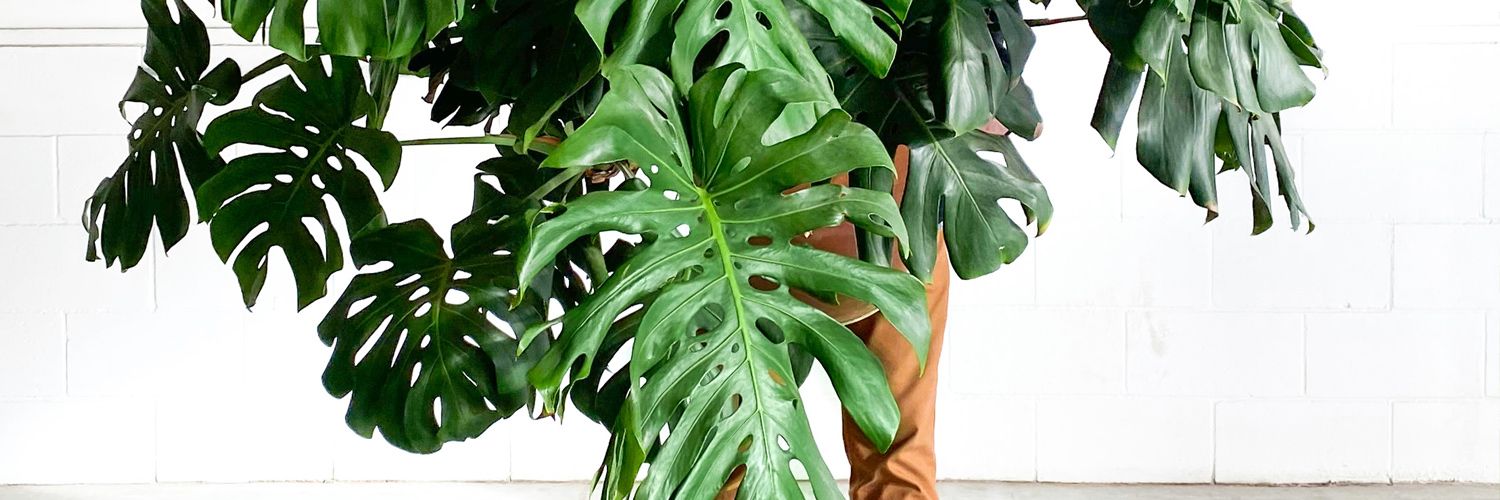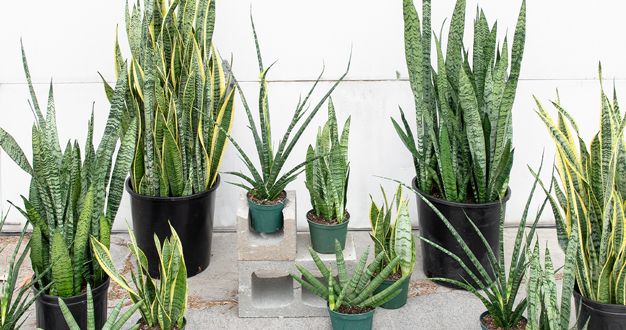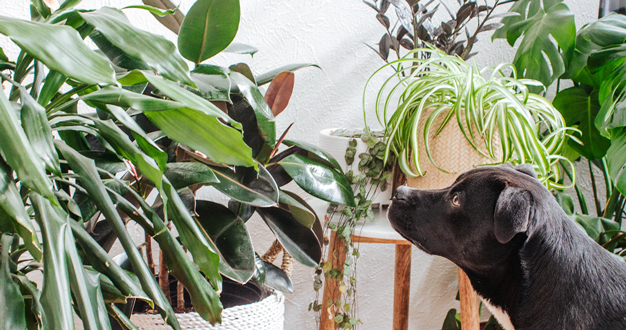
The genus Monstera offers an array of popular vining species with unique fenestrated foliage and interesting growth habits that make them prized members of any houseplant collection. Here we offer a few care tips to keep yours thriving.
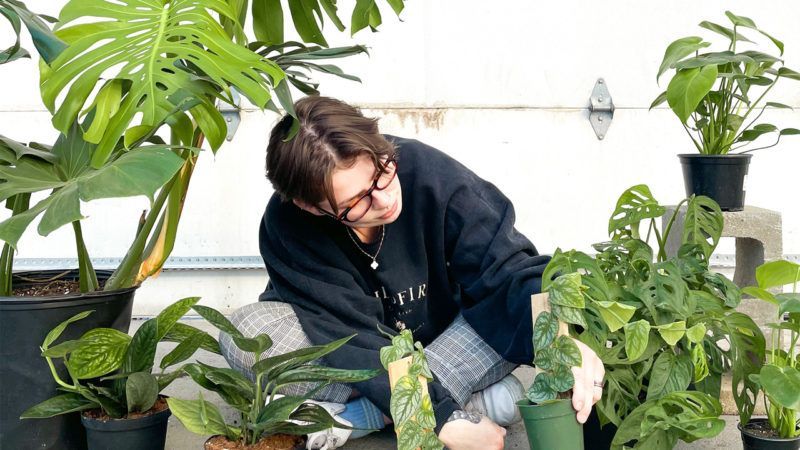
Light
Monstera will thrive in bright, indirect light – an east or south-facing window would be perfect. Those varieties that boast variegation, like thai constellation or albo, will need bright light to ensure the variegation does not begin to revert.
Water
Let the top 50% of the soil dry between waterings. Then give a thorough drink, allowing the excess water to drain out of the drainage hole.
Soil
Use a well-draining houseplant potting mix. Our favorite potting medium is an equal mix of potting soil, perlite, and orchid bark. Also, make sure to pot in a pot with a drainage hole.
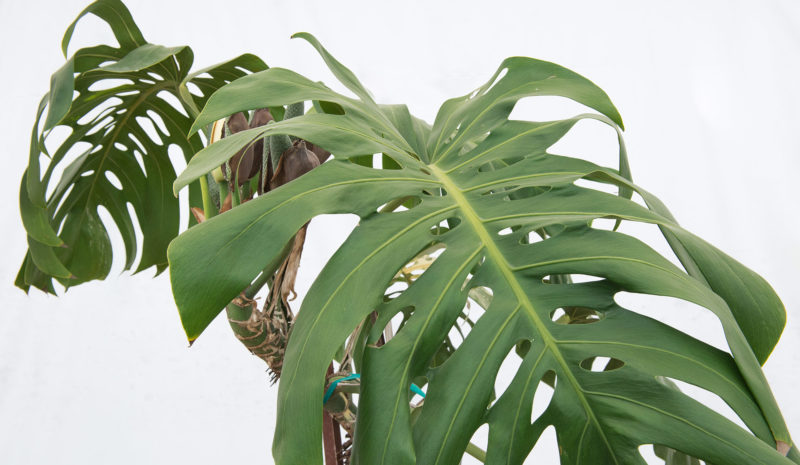
Environment
Monsteras do well in a typical home environment, but they also appreciate additional humidity – especially species with thinner foliage like M. dubia, M. adansonii, and Monstera ‘Peru’.
Fertilizer
Feed twice a month while actively growing with a balanced fertilizer for houseplants. Our favorite is a fertilizer with a 9-3-6 NPK ratio.
Propagation
Monsteras are easily propagated by stem cuttings in water. After the new roots are a couple of inches long, plant the cuttings in a small pot with moistened, well-draining houseplant potting mix.
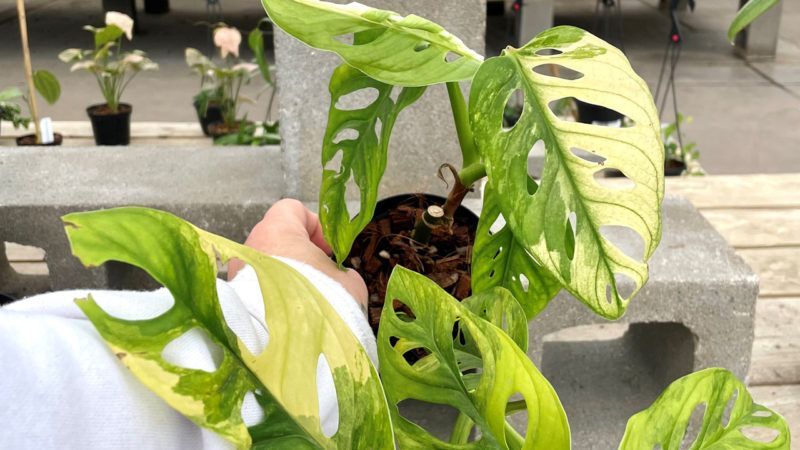
Toxicity
As a group, monsteras are considered toxic to pets due to the presence of calcium oxalate crystals in the stems and foliage. Calcium oxalate can cause irritation to the mouth and digestive system.
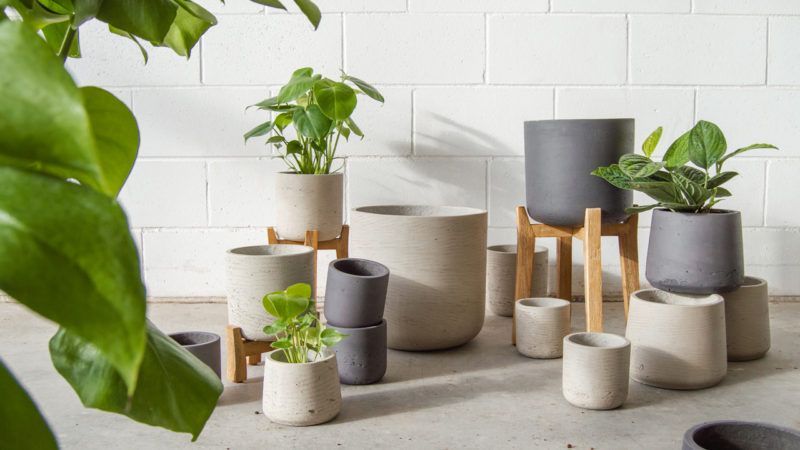
Additional Notes on Monstera Species
- Monstera deliciosa – This lovable hulk will quickly grow as big as you let it. To control its size and wanderlust, provide a support such as a moss pole or trellis and trim back the vines as needed.
- Monstera adansonii – A space-saver for monstera fans, this more delicate version loves a little extra humidity, but otherwise is just as easy to care for.
- Monstera Peru (Monstera karstenianum) –Peru trades the holes and slits for a deep emerald green and interesting texture in its foliage – and it’s much more tolerant of low light than other monsteras.
- Monstera dubia – Give the dubia a flat board to climb on so it can show you its characteristic flat, shingle-like growth pattern.

